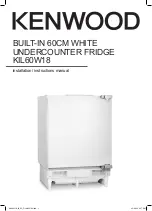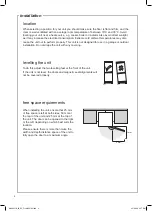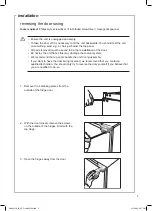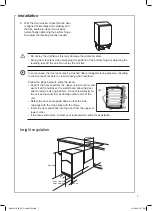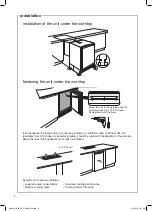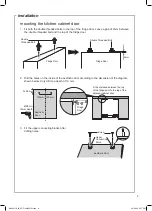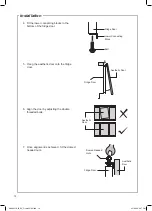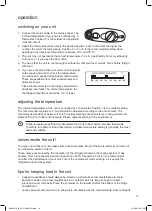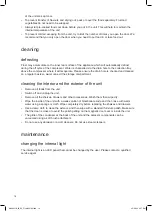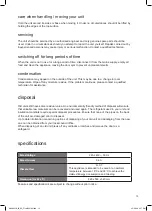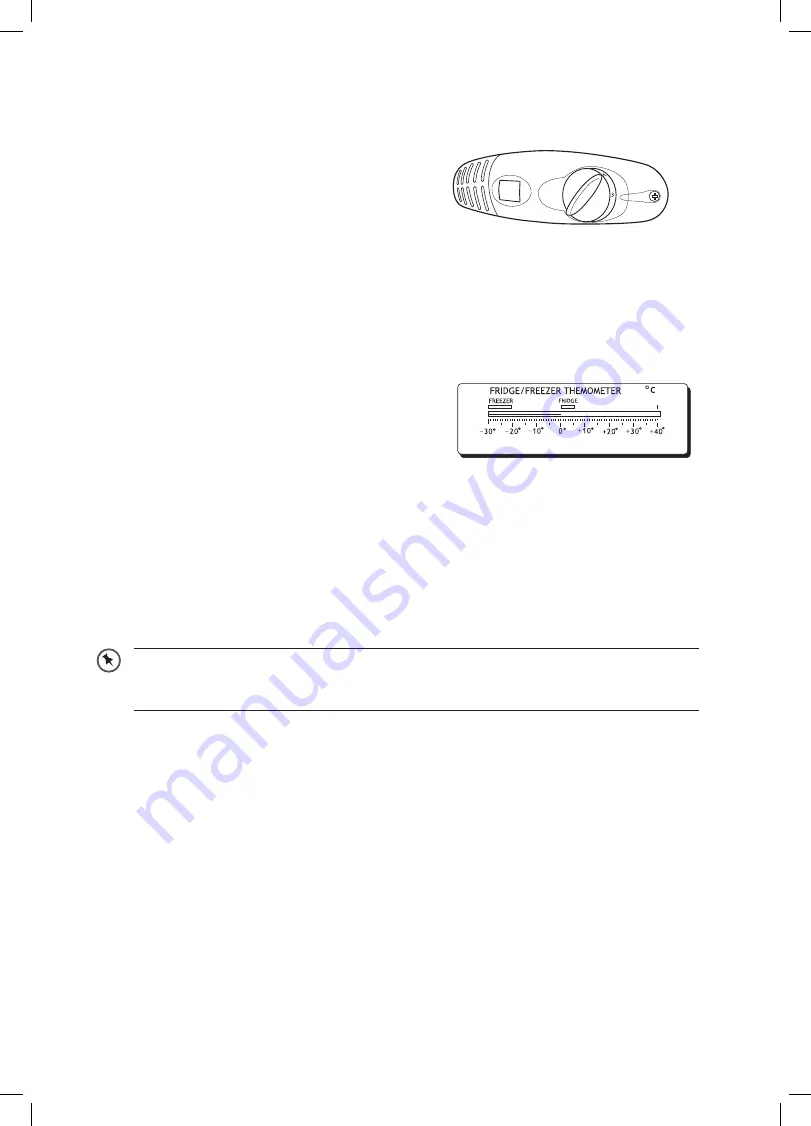
13
operation
switching on your unit
1. Connect the mains cable to the mains socket. The
internal temperature of your unit is controlled by a
thermostat. Position
7
is the coldest and position
0
turns the unit off.
2. Adjust the thermostat control dial to the desired position, bear in mind that the higher the
number, the lower the temperature. Position 2 or 3 or 4 is the recommended setting when
operating at normal room temperature (between 16°C and 38°C).
3. The unit may not operate at the correct temperature if it is in a particularly hot or a particularly
cold room, or if you open the door often.
4. To ensure that the unit is cool enough to sufficiently chill your food, wait 24 hours before filling it
with food.
5. If you are concerned that your unit is not being kept
cold enough and wish to check the temperature,
you will need a special fridge/freezer thermometer.
These are available from most supermarkets and
hardware shops.
Place the thermometer in the fridge compartment
and leave overnight. The correct temperature for
the fridge compartment should be 5°C or lower.
adjusting the temperature
The internal temperature of the unit is controlled by a thermostat. Position 7 is the coldest setting.
The recommended position is 2, but it should be adjusted according to the environment. The
recommended position is between
1
to
4
for colder working environments (i.e. during winter) and
between
5
to
7
for hotter environments. Please adjust according to the environment.
noises inside the unit!
You may notice that your unit makes some unusual noises. Most of these are perfectly normal, but
you should be aware of them!
These noises are caused by the circulation of the refrigerant liquid in the cooling system. It has
become more pronounced since the introduction of CFC free gases. This is not a fault and will
not affect the performance of your unit. This is the compressor motor working, as it pumps the
refrigerant around the system.
tips for keeping food in the unit
• Cooked meats/fishes should always be stored on a shelf above raw meats/fishes to avoid
bacterial transfer. Keep raw meats/fishes in a container which is large enough to collect
juices and cover it properly. Place the container on the lowest shelf at the bottom of the fridge
compartment.
• Leave space around your food, to allow air to circulate inside the compartments. Ensure all parts
2
A high temperature setting may accelerate food to turn bad, hence increase food waste.
Therefore for optimum food preservation, a middle temperature setting is generally the most
safe and suitable.
KIL60W18_IB_RC_Final200703.indd 13
KIL60W18_IB_RC_Final200703.indd 13
3/7/2020 4:57 PM
3/7/2020 4:57 PM



